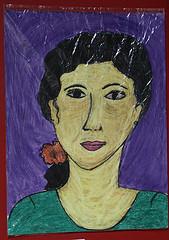Vinegar (Latin vinum acrid and this became old French vinaigre, sour wine), is a liquid that is miscible with sour flavor that comes from the acetic fermentation of the wine and Apple (via bacteria Mycoderma aceti). Vinegar contains a concentration ranging from 3% to 5% acetic acid in water. Natural Vinegars also contain small amounts of tartaric acid, and citric acid. Today vinegar is one of the products most disseminated by the mundolan in really, today, are many shops where it is possible to buy vinegar. We are going to see a little bit of history about this amazing product: the use of vinegar in gastronomy is possible be linked at the beginning of the manufacture of alcoholic beverages. The first written testimony on the use of vinegar comes from the Roman Empire when the gourmet Apicio (contemporary of the Emperor Tiberius) and author of the oldest cookery book, called De re coquinaria in Western culture, the already listed recipes that employ vinegar.
The vinegar traditionally came from the barrels for the wine production that is agriaba, or became bad. The enological expression is: wine is stung, i.e. began to form vinegar. This was happening spontaneously well in a boot or is rising acidity the bottled wine, thus retreated and was used for vinegar. The specific phenomenon of the production of vinegar was not explained until the year 1864. Since this date the use of oil has been developed so far. As we have seen the vinegar you have many jobs.
The main is in the gastronomy: the vinegar is mainly used together with oil for seasoning vegetables and vegetables in salads. Vinegar is a key piece in the pickles, Marinades and pickles, is used as a preservative since it slows down the effects of food rot. Usually used Vinegars flavored with various herbs, such as dill, tarragon, Rosemary and thyme; There are also those of garlic. Another very interesting job is that medicinal: vinegar has some medicinal properties due to its acidity for example acts well against swelling of the skin caused by the bite of certain insects, if vinegar is applied in the zone that stung the insect.

 In this way, the assistencial plan results of the analysis of the nursing diagnosis, examining itself the problems of nursing, the affected necessities and the degree of dependence, where the cares developed during the nursing process are individualizados for each in case that, that is, in accordance with the patient or exactly in accordance with the extension where if it finds the pathology in the organism, them if bases on a model of general attention, that for times serves of reference for the nurse during the elaboration process and implementation of cares properly said (12). Being understood not only as a way to make, however as a way to think the practical assistencial, it is observed that the use of the nursing process involves three interrelated areas of cognition: the reasoning and disgnostic judgment; the reasoning and therapeutical judgment and the reasoning and ethical judgment (13).
In this way, the assistencial plan results of the analysis of the nursing diagnosis, examining itself the problems of nursing, the affected necessities and the degree of dependence, where the cares developed during the nursing process are individualizados for each in case that, that is, in accordance with the patient or exactly in accordance with the extension where if it finds the pathology in the organism, them if bases on a model of general attention, that for times serves of reference for the nurse during the elaboration process and implementation of cares properly said (12). Being understood not only as a way to make, however as a way to think the practical assistencial, it is observed that the use of the nursing process involves three interrelated areas of cognition: the reasoning and disgnostic judgment; the reasoning and therapeutical judgment and the reasoning and ethical judgment (13).  In this direction, it is considered that the livened up drawings, through the dialogue that its personages exert with the small spectators, directly influence in the valuation and maintenance of the commercialized ideal of beauty, standing out bitipo lean, strong and high as being more privileged in detriment of the other corporal possibilities. The above-mentioned author detaches, still, that the esteretipos wide are contemplated by the cultural industry because they take care of I appeal to it economic required for the capitalist ideology. Thus, while communication elements the esteretipos are economic, therefore they allow to process social information quickly, as any another social representation, to transform the evaluations into descriptions and the descriptions in explanations. Esteretipo can exactly be defined as a species of percipient project associated the certain categories of people or objectos, crystallized around a word assigns that them, automatically intervined the representation and characterization of especmenes of these categories (Maisonneuve, J., 1971:110) In such a way, the proper language signals and carries the esteretipos, influencing decisively the processes of communication between individuals and groups (BAPTISTA, 1996, P. 9).
In this direction, it is considered that the livened up drawings, through the dialogue that its personages exert with the small spectators, directly influence in the valuation and maintenance of the commercialized ideal of beauty, standing out bitipo lean, strong and high as being more privileged in detriment of the other corporal possibilities. The above-mentioned author detaches, still, that the esteretipos wide are contemplated by the cultural industry because they take care of I appeal to it economic required for the capitalist ideology. Thus, while communication elements the esteretipos are economic, therefore they allow to process social information quickly, as any another social representation, to transform the evaluations into descriptions and the descriptions in explanations. Esteretipo can exactly be defined as a species of percipient project associated the certain categories of people or objectos, crystallized around a word assigns that them, automatically intervined the representation and characterization of especmenes of these categories (Maisonneuve, J., 1971:110) In such a way, the proper language signals and carries the esteretipos, influencing decisively the processes of communication between individuals and groups (BAPTISTA, 1996, P. 9).  The Centers of Ateno Psicossocial (CAPS) are units intensive and daily deatendimento to the carriers of serious psychic suffering, constituting an alternative to the model centered in the psychiatric hospital, characterized for internments of long permanence and regimen to put in a home. The Centrosde Attention, in contrast, allows that the users remain next to the suasfamlias and communities. The first CAPS of the country appears in March of 1987, with ainaugurao of the CAPS Luis of the Cerqueira Rock, in the City of So Paulo, serious erepresenta the effective implementation of a new model of attention in health mentalpara expressive fraction of the mental sick people (psychotic and neurotics) taken care of in the public net, being its constituted iderio of proposals dirigidas overcoming of the limitations evidenced for the binomial clinic-hospitalpsiquitrico in the treatment and whitewashing of its clientele (ONOCKO-CAMPOS, 2006). Inserted in the context politician of redemocratizao of the country enas fights for the revision of conceptual landmarks, of the forms of attention and definanciamento of the actions of mental health that if had fortified from finalda decade of 1980 in Latin America and Brazil, the CAPS Luis of the Cerqueira Rock (or CAPS Itapeva), together with the Nuclei of Ateno Psicossocial (NAPS), inaugurated from 1989, in Saints, will go to consist in refernciaobrigatria for the implantation of services substitutes to the lunatic asylum in nossopas (ONOCKO-CAMPOS, 2006). However, they will be the santistas NAPS that, through funcionamentoterritorializado, the 24 hours/day, with destined stream beds the patients in crisis eoperando in net with other services, that will more accomplish significativoavano in the overcoming of the model centered in the psychiatric hospitals, ambulatory and psychiatric urgencies, accomplishing true rupturaparadigmtica in relation to the previous model (ONOCKO-CAMPOS, 2006) These two initiatives will be precursory of same types nos in the State of So Paulo, but in all Brazil, a time that will subsidize oMinistrio of the Health in the formularization of Portaria N. .
The Centers of Ateno Psicossocial (CAPS) are units intensive and daily deatendimento to the carriers of serious psychic suffering, constituting an alternative to the model centered in the psychiatric hospital, characterized for internments of long permanence and regimen to put in a home. The Centrosde Attention, in contrast, allows that the users remain next to the suasfamlias and communities. The first CAPS of the country appears in March of 1987, with ainaugurao of the CAPS Luis of the Cerqueira Rock, in the City of So Paulo, serious erepresenta the effective implementation of a new model of attention in health mentalpara expressive fraction of the mental sick people (psychotic and neurotics) taken care of in the public net, being its constituted iderio of proposals dirigidas overcoming of the limitations evidenced for the binomial clinic-hospitalpsiquitrico in the treatment and whitewashing of its clientele (ONOCKO-CAMPOS, 2006). Inserted in the context politician of redemocratizao of the country enas fights for the revision of conceptual landmarks, of the forms of attention and definanciamento of the actions of mental health that if had fortified from finalda decade of 1980 in Latin America and Brazil, the CAPS Luis of the Cerqueira Rock (or CAPS Itapeva), together with the Nuclei of Ateno Psicossocial (NAPS), inaugurated from 1989, in Saints, will go to consist in refernciaobrigatria for the implantation of services substitutes to the lunatic asylum in nossopas (ONOCKO-CAMPOS, 2006). However, they will be the santistas NAPS that, through funcionamentoterritorializado, the 24 hours/day, with destined stream beds the patients in crisis eoperando in net with other services, that will more accomplish significativoavano in the overcoming of the model centered in the psychiatric hospitals, ambulatory and psychiatric urgencies, accomplishing true rupturaparadigmtica in relation to the previous model (ONOCKO-CAMPOS, 2006) These two initiatives will be precursory of same types nos in the State of So Paulo, but in all Brazil, a time that will subsidize oMinistrio of the Health in the formularization of Portaria N. .